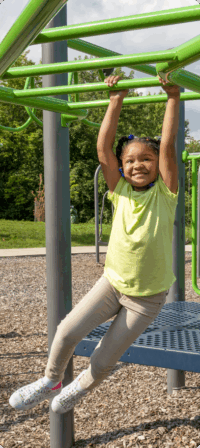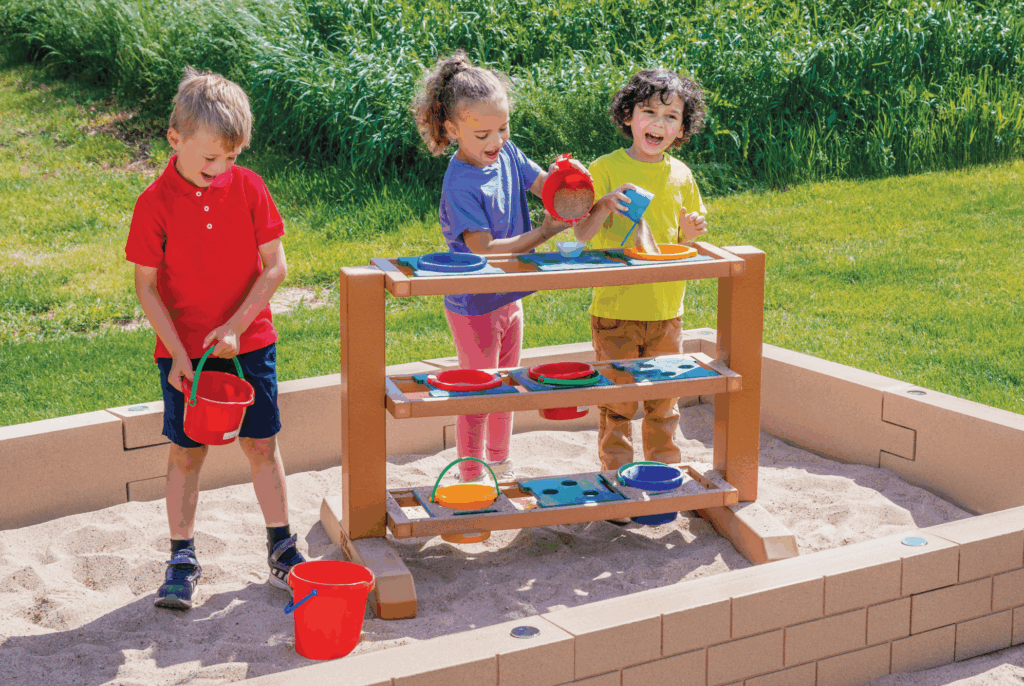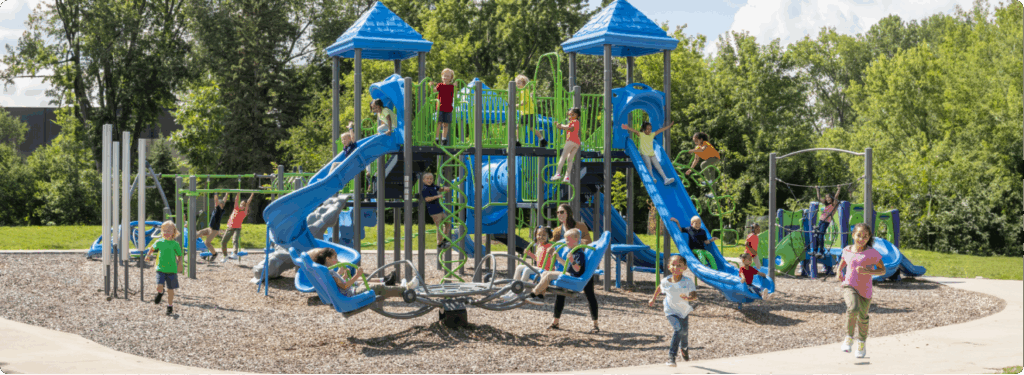A well-designed playground is more than just a place to climb, slide, and swing, it’s a space where children of all abilities can explore, learn, and grow through movement and sensory play. Sensory-rich playgrounds are thoughtfully designed environments that invite all young learners to engage with the world around them in ways that meet their unique needs and preferences.
Whether you’re planning a new outdoor space or looking to enhance an existing one, building in sensory experiences supports whole-child development and helps ensure every child feels included, capable, and inspired to play.
Why Sensory Play Matters Outdoors
Sensory play supports brain development, self-regulation, and communication skills, especially in early childhood when children learn best through hands-on, whole-body experiences. Outdoor sensory play is particularly powerful because it combines natural stimulation (like wind, temperature, and textures) with active movement and open-ended exploration.
For children with sensory processing differences, access to a variety of sensory input—along with the choice to engage at their own pace—can make the playground feel like a safe and welcoming space.
Key Sensory Elements to Include
Here are a few types of sensory input to consider when designing or enhancing your playground:
- Tactile Experiences (Touch)
Add features like: textured stepping stones, sand or dirt digging areas, water tables, tree bark, grass, and interactive panels with different materials.
Why it helps: Tactile play supports fine motor development, exploration, and sensory processing. - Auditory Input (Sound)
Add features like: outdoor musical instruments (drums, chimes, xylophones), wind-activated elements, or echo tubes.
Why it helps: Music and sound exploration encourages self-expression and auditory discrimination while supporting calm or energizing play. - Visual Interest (Sight)
Add features like: bright color panels, reflective materials, rainbow spinners, or changing light and shadow elements like fabric canopies or tunnels.
Why it helps: Visually stimulating areas can attract attention and encourage focus—while softer colors in cozy corners support calm. - Proprioceptive & Vestibular Input (Body Awareness & Balance)
Add features like: swings, climbers, rockers, balance beams, spinning seats, and bouncers.
Why it helps: These experiences strengthen the body and nervous system and help children learn to regulate their movement and emotions. - Olfactory & Natural Sensory Play (Smell & Nature)
Add features like: garden beds, herbs, flowers, and natural materials like mulch, wood, and stone.
Why it helps: Exposure to calming natural scents and textures can soothe the nervous system and support mindfulness.
Inclusive Add-Ons That Encourage All Learners to Play
In addition to large play structures, consider small, sensory-focused add-ons that can be rotated or used flexibly across your outdoor space:
- Sensory tables or bins with natural or seasonal materials like water beads, leaves, or seeds
- Parachutes and fabric tunnels for collaborative group play and movement
- Tactile stepping paths or agility courses with different surface textures
- Colorful beanbags or balls for throwing, balancing, or building gross motor games
These smaller, flexible tools are great for inclusive classrooms and can easily be adapted based on age, sensory preferences, or group size.
Tips for Creating a Sensory-Rich Playground
- Balance active and calm zones. Offer areas where children can climb, swing, and run and quiet corners for sitting, digging, or calming down.
- Offer choices. Let children explore different elements at their own pace. Some may seek high-intensity play, while others prefer quieter sensory input.
- Think low to the ground. Sensory-rich play doesn’t need to be elevated—many accessible features can be placed on or near ground level.
- Engage the senses naturally. Trees, rocks, flowers, and water all provide sensory input without requiring additional equipment.
Supporting All Learners Through Outdoor Design
Sensory-rich playgrounds not only promote inclusion, they support a stronger foundation for learning and development. When children feel safe, confident, and engaged in their environment, they’re more likely to explore, interact, and build important cognitive, physical, and social-emotional skills.
Whether you’re planning a new playground or enhancing your existing one, adding sensory elements creates a more welcoming and enriching space for every child.
Looking to bring more sensory play to your outdoor space?
Our team is here to help you plan a playground that inspires all learners. Contact us today to explore your options, or browse our outdoor products designed for inclusive, active play.








Leave A Comment